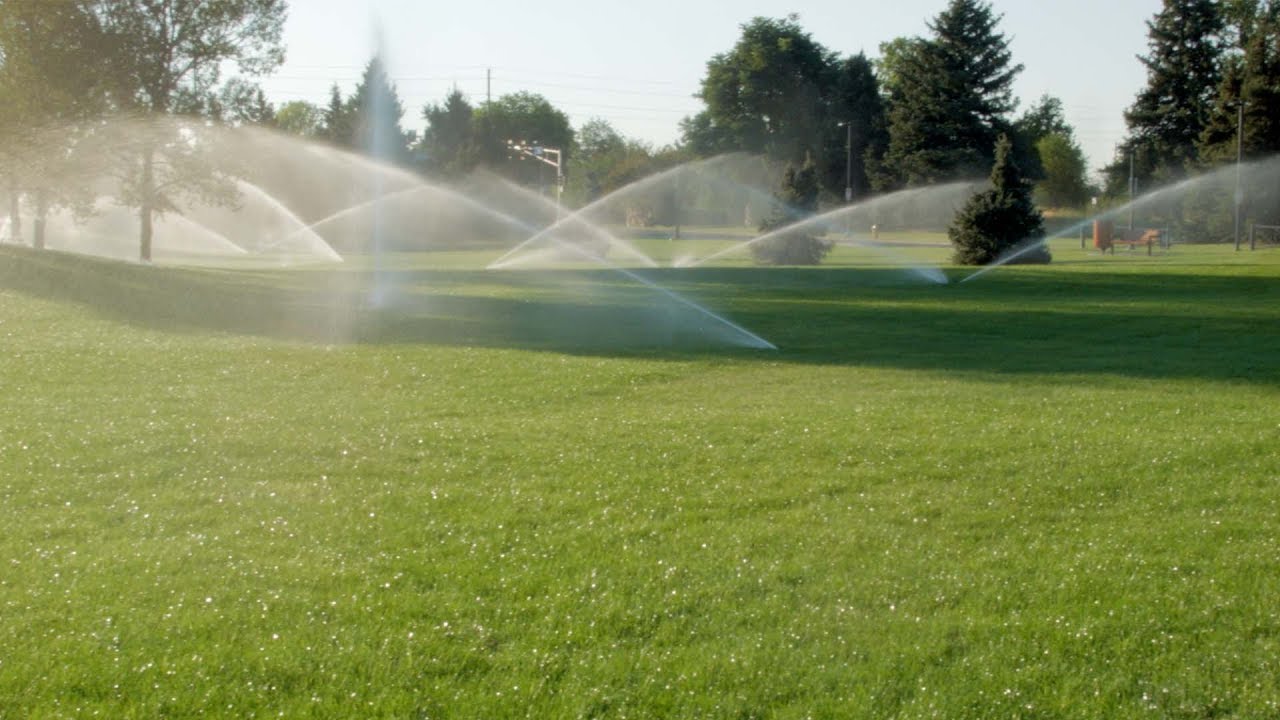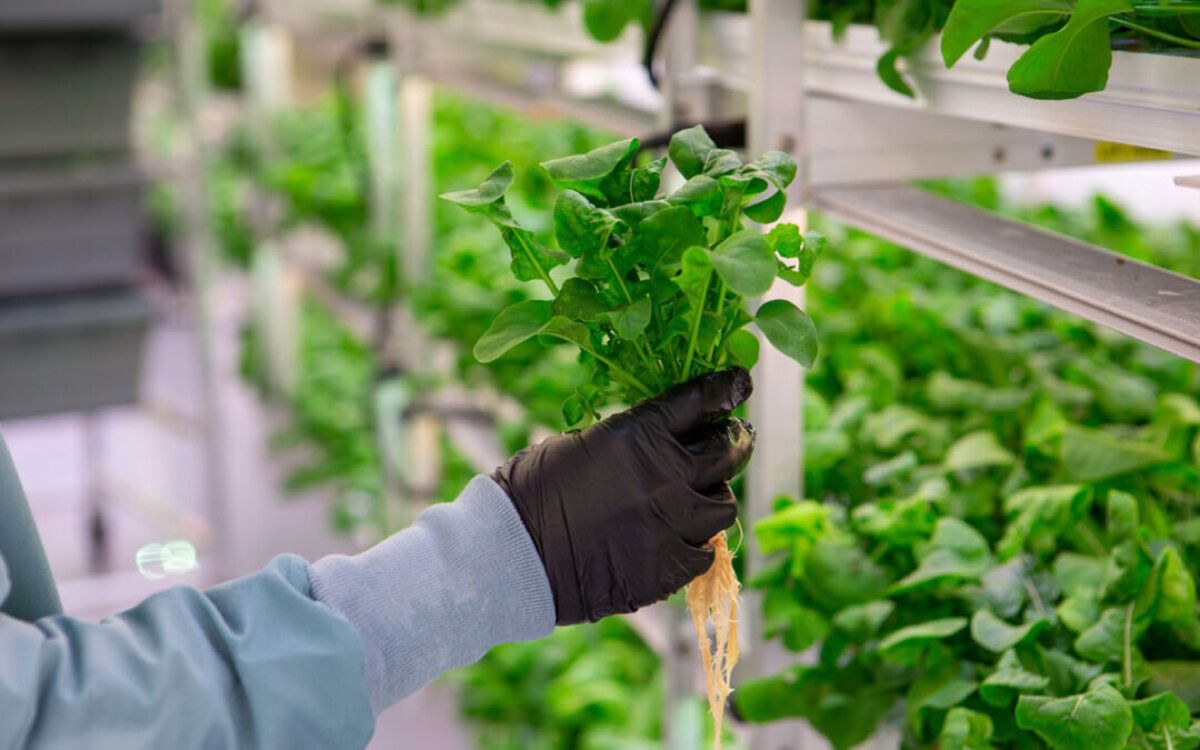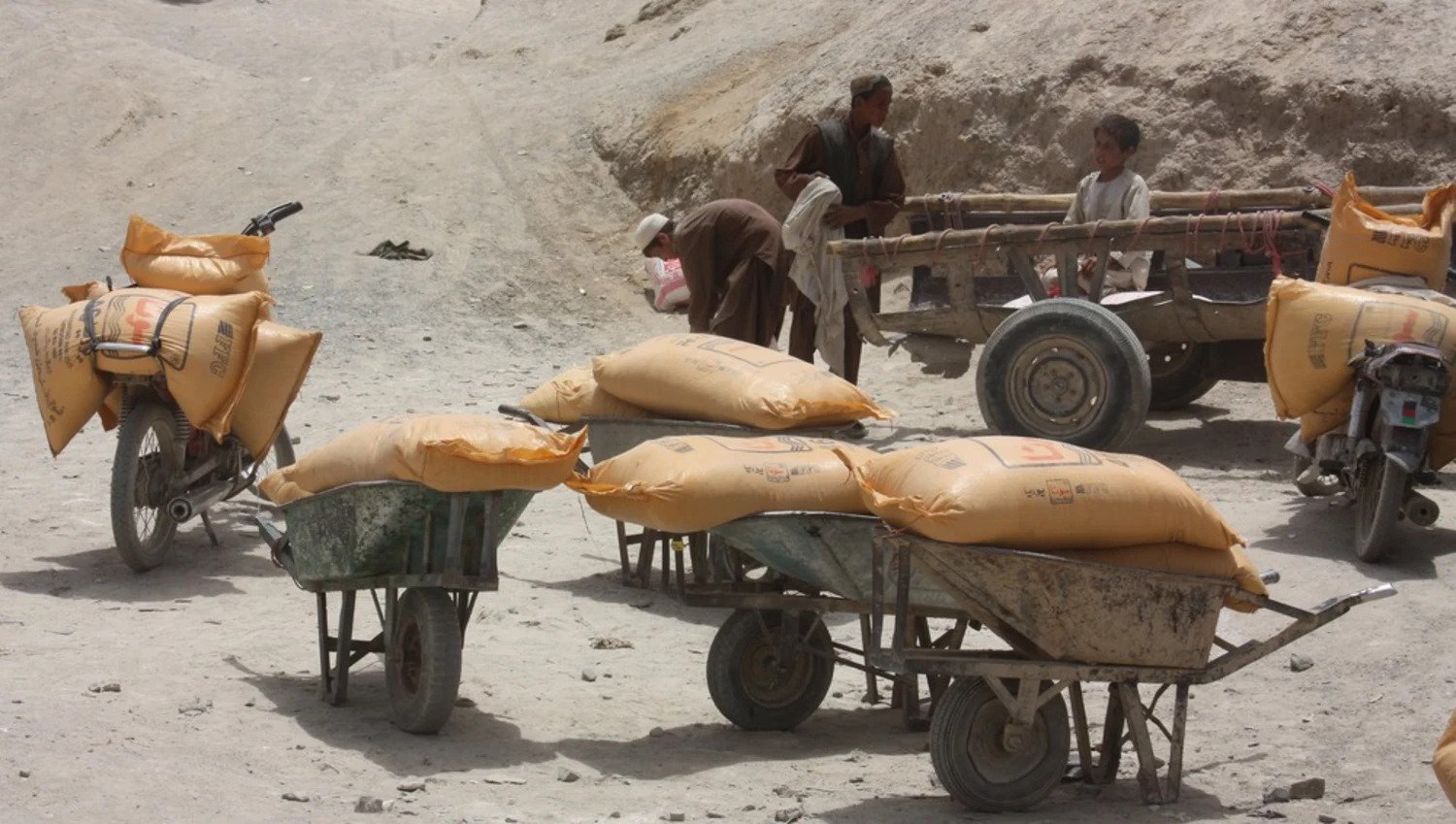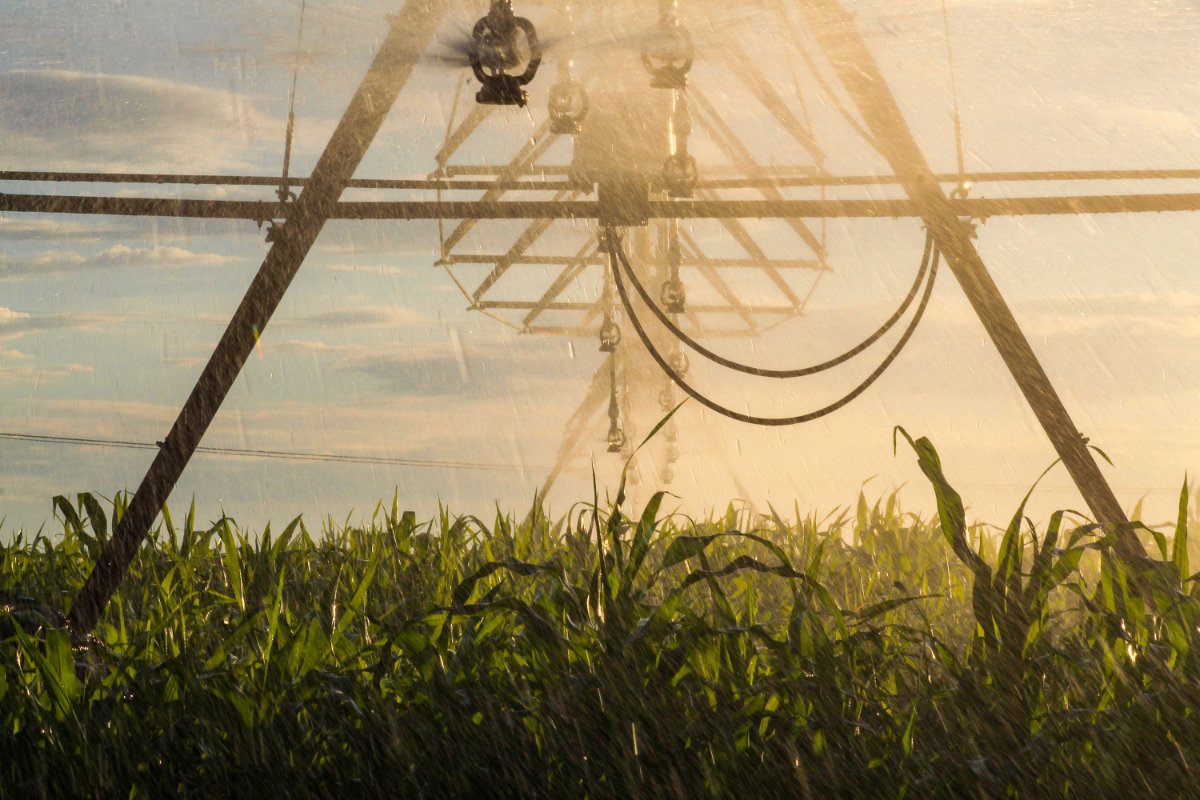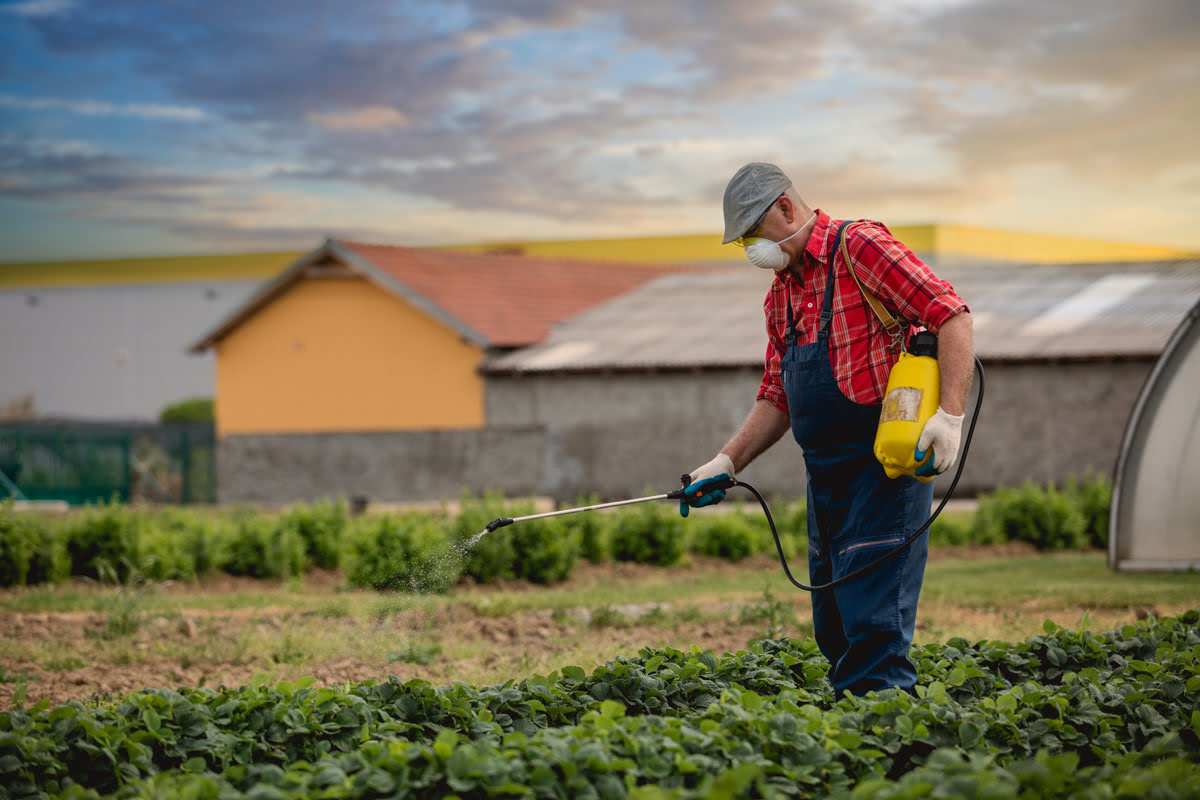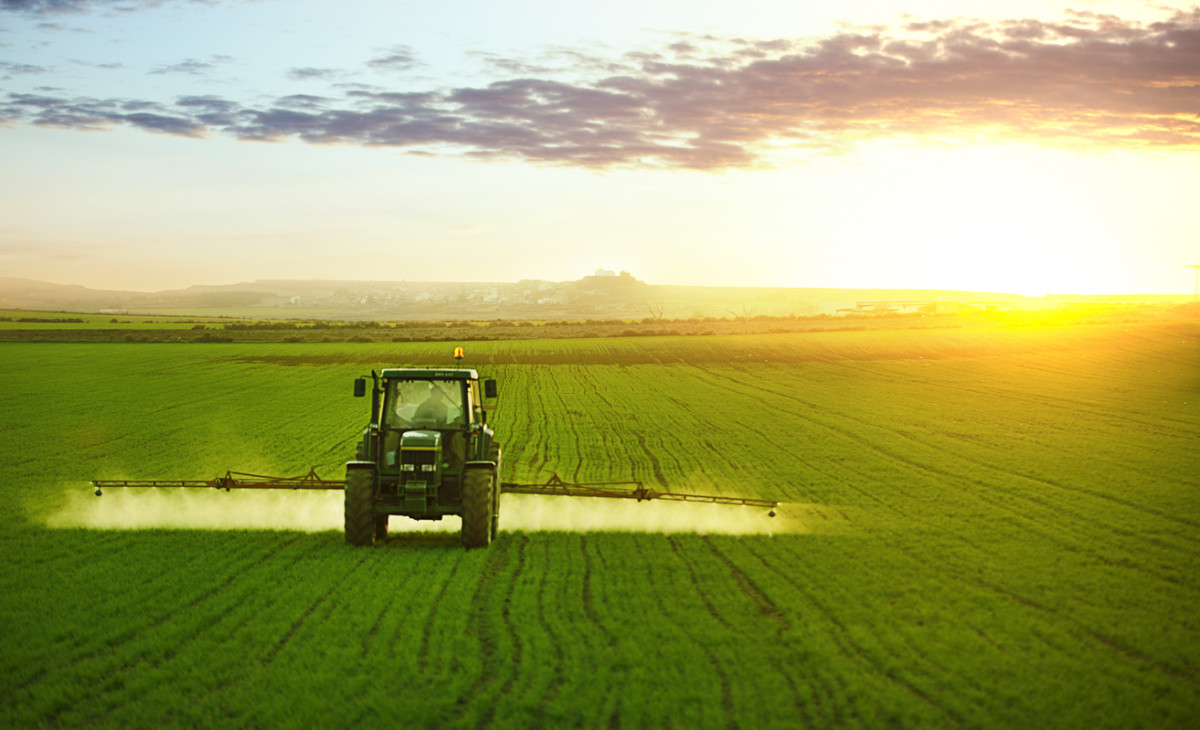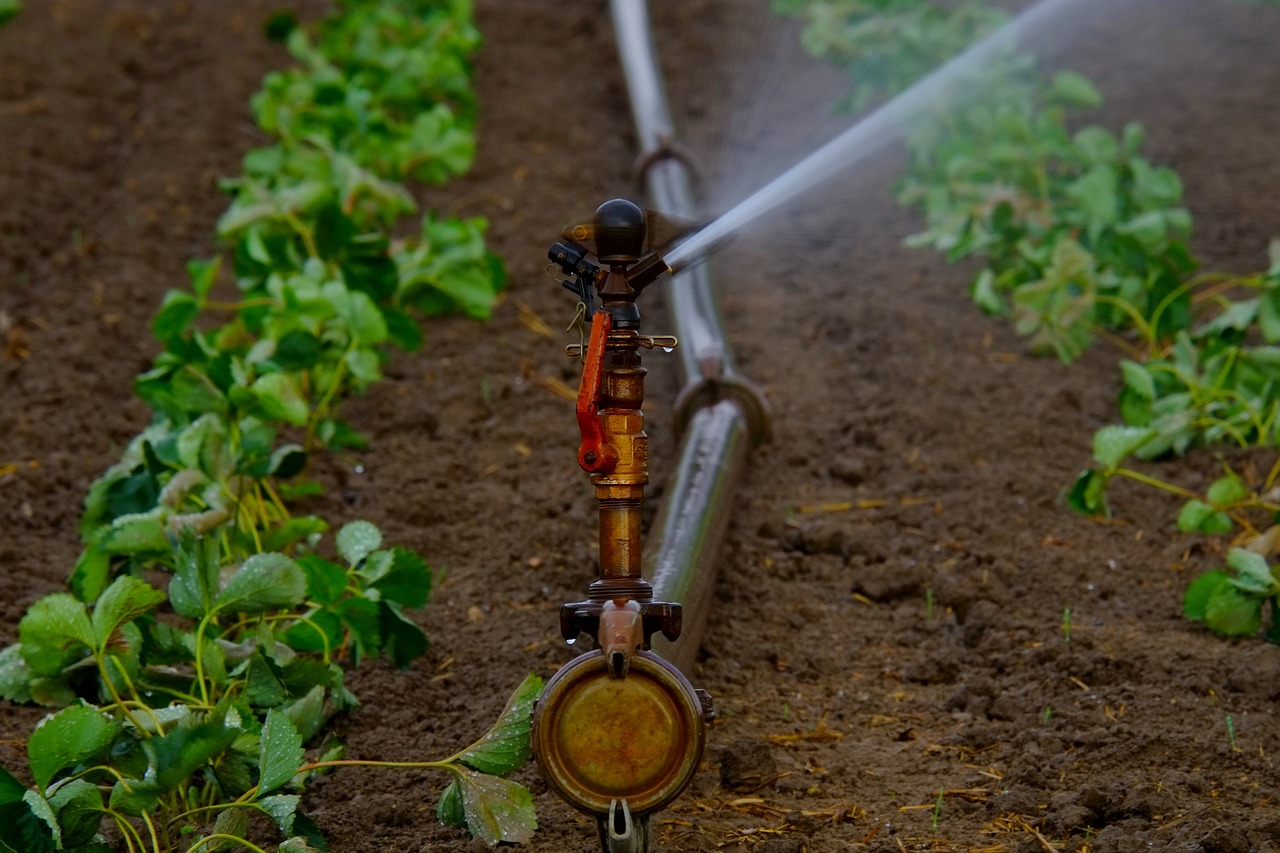Home>Gardening Basics>Tools and Equipment>Why Might A Farmer Need To Use An Irrigation System?
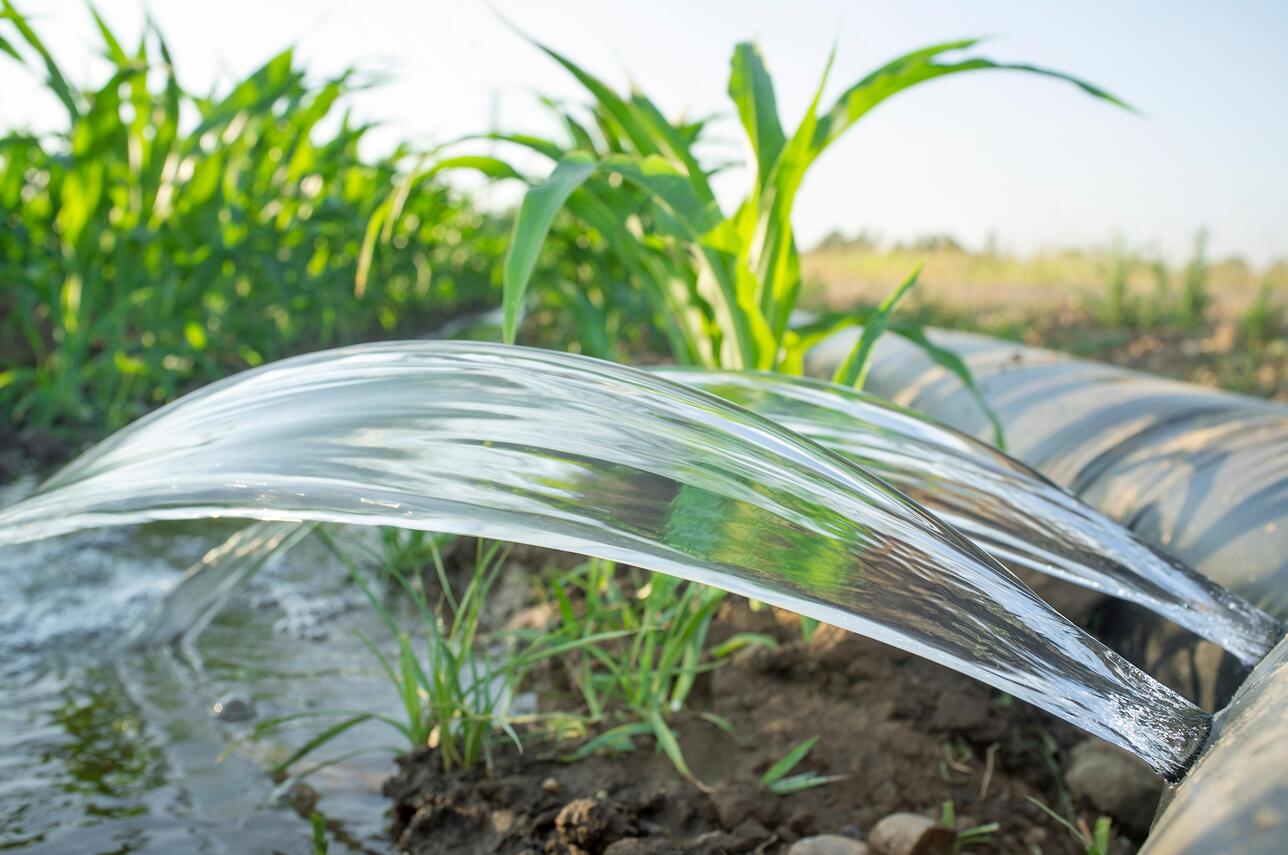

Tools and Equipment
Why Might A Farmer Need To Use An Irrigation System?
Modified: January 22, 2024
Looking to optimize your farming? Discover why tools and equipment like irrigation systems are essential for farmers to maximize crop yields and sustainability.
(Many of the links in this article redirect to a specific reviewed product. Your purchase of these products through affiliate links helps to generate commission for Chicagolandgardening.com, at no extra cost. Learn more)
Table of Contents
Introduction
Farming is a complex and demanding profession that requires careful attention to detail and a deep understanding of various factors that can impact crop production. One crucial aspect of successful farming is proper irrigation. An irrigation system allows farmers to efficiently and effectively deliver water to their crops, ensuring optimal growth and yield.
While it may seem like a simple concept, irrigation plays a vital role in modern agriculture. It is not merely a matter of providing plants with water; it also involves managing water resources efficiently to meet the specific needs of different crops and overcome challenges posed by climate conditions, droughts, and water scarcity.
This article will explore why a farmer might need to use an irrigation system, highlighting the increased water demand in agriculture, crop water requirements, climate conditions, and the impact of drought and water scarcity on farming. Additionally, we will discuss how farmers can manage their water resources and delve into the benefits of using irrigation systems. Finally, we will explore different types of irrigation systems and factors to consider when selecting the most suitable one.
By the end of this article, readers will understand the crucial role of irrigation systems in modern farming and gain insights into the various considerations involved in utilizing these systems effectively.
Increased Water Demand
One of the primary reasons why farmers need to use irrigation systems is the ever-increasing water demand in agriculture. As the global population continues to grow, the demand for food and fiber also rises, putting pressure on farmers to increase crop production. This increased demand necessitates the efficient use of water resources through irrigation.
Traditionally, farmers relied on rainfall to water their crops. However, rainwater alone is often insufficient to meet the water needs of crops, especially during periods of prolonged dry spells. Additionally, relying solely on rainfall increases the risk of crop failure and hampers the ability to maximize yield and profitability.
Irrigation allows farmers to supplement natural rainfall and provide a consistent supply of water to crops throughout their growth cycle. This ensures that plants have access to a sufficient amount of water when they need it most, resulting in healthier plants, improved yields, and better quality produce.
Furthermore, irrigation enables farmers to cultivate crops in regions characterized by low rainfall or erratic precipitation patterns. By efficiently distributing water to the plants, farmers can grow a wider variety of crops and adapt to changing climatic conditions. This not only helps to ensure food security but also supports the diversification of agricultural practices.
The increased water demand in agriculture necessitates the use of irrigation systems to optimize water usage, conserve resources, and meet the growing needs of a rapidly expanding population. By incorporating irrigation into their farming practices, farmers can overcome limitations imposed by natural water availability and achieve more sustainable and productive farming systems.
Crop Water Requirements
Understanding the specific water needs of different crops is crucial for farmers to effectively utilize irrigation systems. Each plant variety has unique requirements for water, and providing the right amount at the right time is essential for optimal growth and development.
The water requirements of crops are influenced by various factors, including plant type, growth stage, environmental conditions, and soil characteristics. Some crops, such as rice or certain vegetables, have higher water demands compared to others. It is essential for farmers to be aware of these differences in order to tailor their irrigation practices accordingly.
Irrigation systems allow farmers to apply water directly to the root zone of plants, avoiding unnecessary evaporation and reducing water wastage. By targeting the water supply to the plants’ root systems, farmers can efficiently meet the crop’s water requirements while minimizing water loss. This precision irrigation helps to conserve water resources and optimize water usage in the field.
Another consideration in crop water requirements is evapotranspiration (ET), which is the combined loss of water through evaporation from the soil surface and transpiration from the plant’s leaves. By monitoring and estimating ET rates, farmers can determine the correct amount of water to apply through irrigation systems to meet the crops’ needs.
Accurate knowledge of crop water requirements not only improves resource management but also enhances crop health and productivity. Under-irrigation can lead to plant stress, reduced growth, and lower yields, while over-irrigation can result in waterlogging, nutrient leaching, and increased susceptibility to diseases. Irrigation systems help farmers strike the right balance, ensuring that crops receive adequate water without wasteful excess.
Overall, understanding and meeting the specific water requirements of different crops is essential for efficient irrigation practices. By utilizing irrigation systems, farmers can tailor their water delivery to the specific needs of different crops, promoting healthy growth and maximizing yield potential.
Climate Conditions
Climate conditions play a significant role in the need for farmers to use irrigation systems. Different regions experience varying levels of rainfall, temperatures, and humidity, which can impact crop growth and water availability.
In arid and semi-arid regions, where rainfall is limited and unreliable, irrigation becomes essential for agriculture. These regions often lack the natural water resources required for crop production. By implementing irrigation systems, farmers can supplement the insufficient rainfall, ensuring a stable water supply for their crops.
Even in regions where rainfall is relatively abundant, there can be significant variations in precipitation patterns. Droughts and dry spells can occur, affecting crop growth and productivity. In such cases, irrigation systems become vital in providing a consistent water supply to sustain crop development during periods of water scarcity.
Conversely, excessive rainfall in certain regions can lead to waterlogged soils, which can harm plant roots and hinder crop growth. By using well-designed irrigation systems, farmers can control the amount and timing of water application, preventing waterlogging and allowing excess water to drain away appropriately.
Moreover, extreme temperatures, both hot and cold, can impact crop growth and water requirements. High temperatures can cause increased evapotranspiration rates, leading to plant stress and an increased need for water. In such cases, irrigation systems can help replenish the lost moisture and maintain optimal growing conditions for the crops.
On the other hand, during cold periods, especially in regions with freezing temperatures, irrigation systems can be used for frost protection. By applying water to the plants, a thin layer of ice forms, protecting them from the damaging effects of frost.
Considering the diverse climate conditions that farmers face, irrigation systems provide a valuable tool to adapt to and mitigate the challenges posed by variations in rainfall, temperature extremes, and water availability. By optimizing water management through irrigation, farmers can enhance their resilience to climate fluctuations and maintain stable crop production.
Drought and Water Scarcity
Drought and water scarcity have become increasingly prevalent worldwide, posing significant challenges to farmers and agricultural production. In regions where water resources are limited or facing high demand, the use of irrigation systems becomes crucial for sustainable farming.
Droughts, defined as prolonged periods of insufficient rainfall, can have devastating effects on crops. Without access to an adequate water supply, plants can experience stress, reduced growth, and yield losses. In such situations, irrigation systems play a vital role in ensuring a continuous water source for plant survival and growth.
Water scarcity, on the other hand, refers to situations where the available water resources are insufficient to meet the demands of agriculture, as well as other sectors. This can occur due to population growth, competing water uses, and climate change impacts. Irrigation systems provide an efficient means of distributing the limited water resources, enabling farmers to optimize their water use and sustain crop production.
Furthermore, the use of advanced irrigation techniques, such as drip irrigation or micro-irrigation, can significantly reduce water usage compared to traditional flood irrigation methods. These systems deliver water directly to the plant roots, minimizing evaporation and runoff, and ensuring that water is used most efficiently.
In regions facing water scarcity, farmers may also employ techniques such as water recycling and reuse, which further conserve this precious resource. By reclaiming and treating wastewater or using captured rainwater, farmers can reduce their dependence on freshwater sources and still provide adequate irrigation for their crops.
When facing drought and water scarcity, it is crucial for farmers to implement effective water management practices. By utilizing irrigation systems and adopting water-saving techniques, farmers can navigate through these challenging conditions, optimize water use, and mitigate the negative impacts on crop production.
Farmer’s Water Management
In addition to utilizing irrigation systems, farmers play a critical role in managing water resources efficiently. Water management practices implemented by farmers are essential for sustainable agriculture and maximizing crop productivity.
One aspect of effective water management is understanding the water requirements of crops and adapting irrigation schedules accordingly. Farmers need to consider factors such as soil moisture, evapotranspiration rates, and crop growth stage when determining the optimal timing and amount of water application. Monitoring tools and technologies, such as soil moisture sensors, can aid farmers in making informed irrigation decisions.
Furthermore, farmers can implement water-saving techniques such as mulching, which helps to reduce evaporation and conserve soil moisture. By applying a layer of organic or synthetic material to the soil surface, farmers can minimize water loss and improve water use efficiency.
Proper water management also involves managing runoff and drainage. Farmers can implement strategies such as contour plowing and terracing to prevent excessive runoff and soil erosion, which can result in the loss of valuable topsoil and water pollution. By managing the landscape and implementing appropriate drainage systems, farmers can optimize water retention in the field and minimize water loss.
Another aspect of water management is the use of water conservation practices. Farmers can explore alternative water sources, such as rainwater harvesting or utilizing treated wastewater for irrigation. These practices alleviate the pressure on freshwater resources and contribute to a more sustainable and efficient use of water in agriculture.
Education and training programs can also play a vital role in promoting effective water management among farmers. By providing information on best practices, innovative technologies, and water-efficient farming techniques, farmers can enhance their knowledge and skills to optimize water use in their specific farming operations.
Ultimately, the success of water management lies in the hands of farmers. By implementing proper irrigation strategies, adopting water-saving techniques, and actively managing water resources, farmers can make significant strides toward sustainable agriculture and ensure the long-term viability of their farming practices.
Benefits of Irrigation Systems
Irrigation systems offer numerous benefits to farmers and the agricultural industry as a whole. These systems provide solutions to challenges posed by water availability, climate conditions, and the increasing demand for food production. Here are some key benefits of using irrigation systems:
- Increased crop yield: Irrigation systems ensure that plants receive a sufficient and consistent water supply, which is essential for optimal growth and improved crop yields. By providing water directly to the root zone, irrigation systems help plants thrive, even in areas with limited rainfall.
- Flexibility in crop selection: With irrigation, farmers can grow a wider range of crops that may have specific water requirements or are not suitable for the region’s natural conditions. This provides an opportunity for diversification, contributes to better farm revenues, and enhances food security.
- Water conservation: While irrigation systems require water, they often use it more efficiently compared to traditional irrigation methods. For instance, technologies such as drip irrigation deliver water directly to the plant roots, minimizing evaporation and runoff. This conserves water resources and promotes sustainable water management practices.
- Enhanced resource management: Irrigation systems allow farmers to manage water resources more effectively. By providing precise control over water application, farmers can minimize water waste, prevent waterlogging or soil erosion, and optimize nutrient uptake by the plants.
- Time and labor savings: Irrigation systems automate the process of water application, reducing the need for manual labor. Farmers can save time and effort by efficiently irrigating large areas of land with less labor-intensive methods, allowing them to focus on other farm operations.
- Improved crop quality: Consistent and adequate water supply through irrigation systems promotes healthy plant growth, resulting in improved crop quality. Irrigation helps to reduce stress on plants, mitigates the impact of drought or excessive rainfall, and minimizes the risk of crop diseases.
- Year-round production: In regions with seasonal or unpredictable rainfall patterns, irrigation systems enable farmers to cultivate crops year-round. This continuous production helps meet market demands, ensures a more stable income for farmers, and reduces dependence on seasonal rainfall.
Overall, irrigation systems offer immense benefits to farmers, enabling them to overcome water-related challenges, optimize crop production, and contribute to sustainable agriculture. By harnessing the power of water through efficient irrigation practices, farmers can achieve higher yields, conserve resources, and ensure long-term agricultural viability.
Types of Irrigation Systems
There are several types of irrigation systems available for farmers to choose from, each with its own advantages and suitable applications. The selection of the appropriate irrigation system depends on factors such as crop type, field size and shape, terrain, water availability, and financial resources. Here are some commonly used irrigation systems:
- Sprinkler Irrigation: Sprinkler irrigation involves distributing water through a system of pipes equipped with sprinkler heads that spray water over the field. Sprinklers can be fixed or rotating, delivering water in a pattern that covers the desired area. This system is versatile, suitable for various crop types, and helps reduce water loss due to evaporation.
- Drip Irrigation: Drip irrigation is a highly efficient system that delivers water directly to the plant’s root zone. It involves applying small amounts of water through emitters or drippers placed near the plant’s base. Drip irrigation minimizes water loss from evaporation and runoff, increases water use efficiency, and is particularly beneficial for perennial crops and water-scarce regions.
- Subsurface Irrigation: Subsurface irrigation involves delivering water below the soil surface directly to the root zone. It uses perforated pipes or tubing buried in the ground, allowing water to seep into the soil slowly. This system reduces water loss through evaporation and can be effective in areas with high evaporation rates or sandy soils with low water-holding capacity.
- Flood Irrigation: Flood irrigation is one of the oldest and simplest methods of irrigation, involving flooding the field with water. It is often used for large agricultural areas and is suitable for crops that tolerate excess water, such as rice. While flood irrigation can be less water-efficient compared to other systems, it is relatively cost-effective and easy to implement.
- Center Pivot Irrigation: Center pivot irrigation involves a long, rotating arm with sprinklers that move in a circular pattern around a central pivot point. This system is commonly used for large fields and offers efficient water distribution. It is particularly suitable for flat or slightly sloping terrain and can cover a significant area with minimal labor requirements.
- Lateral Move Irrigation: Lateral move irrigation is similar to center pivot irrigation but operates on a linear path. The system consists of a series of sprinklers connected to a moving lateral line, which traverses the field. This system is adaptable to irregularly shaped fields and provides uniform water application.
It is important for farmers to consider factors such as water and energy efficiency, cost-effectiveness, and compatibility with the field’s characteristics when selecting an irrigation system. Consulting with agricultural experts and considering local conditions can help farmers make an informed decision and choose the most suitable system for their specific needs.
Factors to Consider in Selecting an Irrigation System
Choosing the right irrigation system is a crucial decision for farmers, as it directly affects water efficiency, crop health, and overall farm productivity. Consideration of various factors can help farmers make an informed choice that best suits their specific needs and field conditions. Here are some key factors to consider in selecting an irrigation system:
- Crop type and water requirements: Different crops have varying water needs and respond differently to specific irrigation methods. Understanding the water requirements of the crops being cultivated is essential in determining the most suitable irrigation system.
- Field size and shape: The size and shape of the field can influence the selection of an irrigation system. For example, center pivot or lateral move systems are well-suited for large, rectangular fields, while drip irrigation may be more appropriate for small, irregularly shaped fields.
- Soil type and drainage: Soil type affects water absorption and retention, impacting irrigation efficiency. Sandy soils may benefit from drip or sub-surface irrigation systems, while heavier clay soils may require modified sprinkler systems to prevent water runoff or waterlogging.
- Water availability and quality: Assessing the availability and quality of water resources is crucial in determining the feasibility of different irrigation systems. Factors such as water source proximity, water rights, and water quality (including salinity levels) need to be considered to ensure sustainable irrigation practices.
- Topography and terrain: The slope and topography of the field will influence the selection of an irrigation system. For steep or hilly terrain, systems like drip irrigation or terraced flood irrigation can help minimize soil erosion and water wastage.
- Energy requirements: Some irrigation systems, such as center pivot or lateral move, require a reliable energy source for operation. Considering energy availability and costs is important in assessing the long-term sustainability and economic feasibility of the system.
- Installation and maintenance costs: The initial installation and ongoing maintenance costs of an irrigation system must be taken into account. Carefully evaluating the investment required and comparing it to potential long-term benefits is crucial for financial planning.
- Climate conditions: Local climate conditions, including rainfall patterns, temperature, and evapotranspiration rates, can influence the selection of an irrigation system. Systems that mitigate the effects of drought or excessive rainfall, such as drip irrigation or sprinkler systems with adjustable water output, may be better suited for specific climates.
- Farm management capabilities and labor availability: Farmers should consider their own expertise and labor availability when selecting an irrigation system. Some systems require more technical knowledge and maintenance, while others may be more user-friendly and can be managed with limited labor resources.
Considering these factors will help farmers make an informed decision and select the most suitable irrigation system for their specific farming operation. It is essential to consult with experts, attend workshops, and gather information from local agricultural agencies to ensure the successful implementation of an efficient and sustainable irrigation system.
Conclusion
Irrigation systems play a critical role in modern agriculture, allowing farmers to meet the increasing water demand, optimize crop water requirements, and overcome challenges posed by climate conditions, droughts, and water scarcity. By providing a consistent and efficient water supply to crops, irrigation systems enhance crop productivity, improve water management practices, and contribute to sustainable farming.
The choice of an appropriate irrigation system depends on various factors, including crop types, field size and shape, soil characteristics, water availability and quality, and climate conditions. Farmers must carefully consider these factors to select the most suitable irrigation system that meets their specific needs and maximizes water use efficiency.
Benefits of irrigation systems include increased crop yield, flexibility in crop selection, water conservation, improved resource management, time and labor savings, enhanced crop quality, and year-round production. These benefits directly contribute to the success and profitability of farming operations and sustain the long-term viability of agriculture.
Effective water management by farmers, in conjunction with the use of irrigation systems, is crucial for optimizing water use and ensuring sustainable agricultural practices. Farmers should consider factors such as crop water requirements, field characteristics, and available resources to implement appropriate irrigation practices, water-saving techniques, and efficient resource management strategies.
In conclusion, irrigation systems are indispensable for modern farming, providing a solution to increasing water demands, enabling farmers to adapt to varying climate conditions, and overcoming challenges posed by drought and water scarcity. By utilizing the right irrigation system, implementing effective water management practices, and considering site-specific factors, farmers can achieve higher crop yields, conserve water resources, and ensure the long-term success of their agricultural endeavors.
